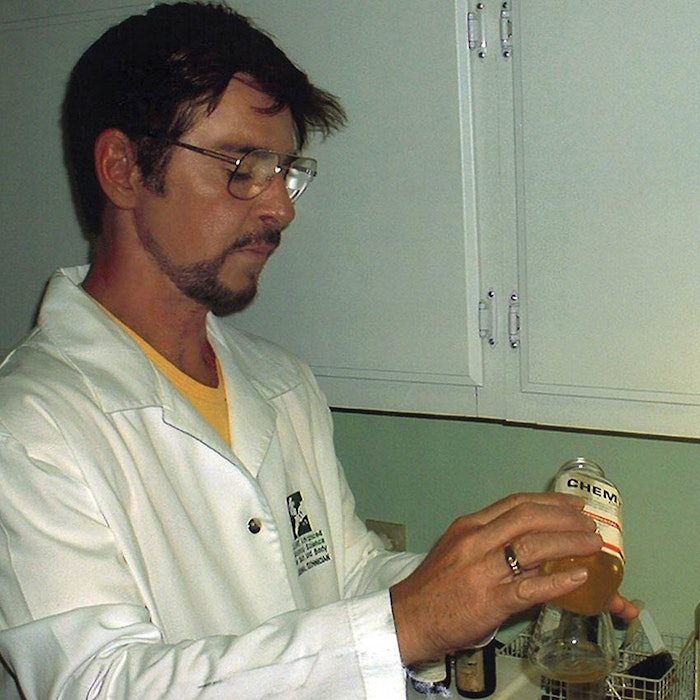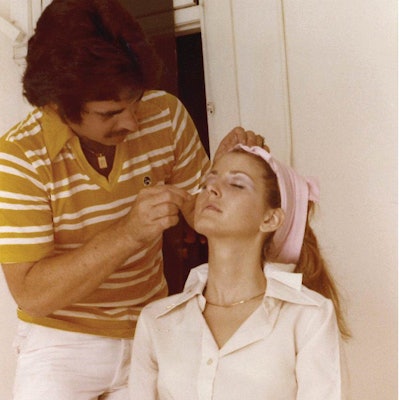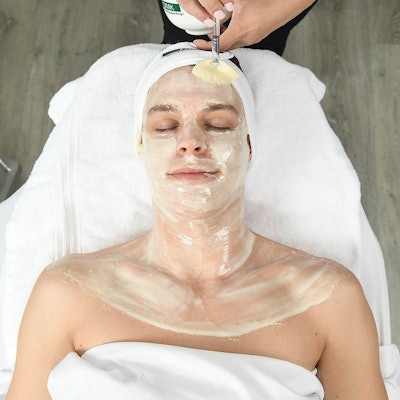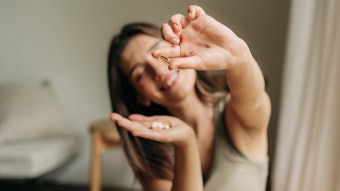
The life and career of Danné Montague-King is mesmerizing, as if you were watching a skin care magician. Many marvel at his life’s work not just because he has been doing it for an astonishing 55 years, but because he has returned decade after decade with awe-inspiring scientific advancements, efficacious treatments for the practitioner and charisma that is unmatched. And why after 55 years does he keep seeing success, you may ask? We sat down with the man himself for an unfiltered conversation about his life’s work, what inspired some of his most popular products and what characteristics he sees in successful skin care practitioners.
Skin Inc. (SI): How did you get started in crafting treatments for skin care professionals?
Danné Montague-King (DK): There is nothing linear about the process. The first few years of me in practice had nothing to do with beauty schools or any criteria, and it still doesn’t. I wanted to change people. I was so intent on revising this bad situation that I suffered myself as a kid. When you change their skin, you change their lives. When you change those things that people fear, you improve their life. I just kept at it.
In those early years, I always used the body, which includes the face, as the lab. For a long time, clients just worked with me. People were just so nice. I never preached product; I always preached science and concepts. The products were something they were involved with too. Why people trusted me during this time, I often wonder. But, we always got results. I think that was the reason. If we never did, they would label me as a nutcase.
SI: How did you then stumble on the notorious enzyme treatment?
DK: Enzymes are protein meat-eaters that chomp up dead cells. It occurred to me that we are the body enzyme. We are nothing more than a bag of fluids, a few chemicals and four elements, orchestrated by enzymes at every level and held together with electromagnetic energy. That is what the human body is. I had to learn about transferase enzymes that kickstart enzymes already in the skin that have been sluggish as you get older. They carry messages across cell membranes. Let’s kick them in the butt and get them going again. That’s what I was interested in—those enzymes that were already in the skin. Some people react right away. It is based on the epidermal enzymes not the topical ones. After I researched and explored the use of enzymes in the body, I was working with powders making them more active. I had applied a mixture to my dear friend, and she became reactive. I flipped out wondering what I had done, but everything went away and she looked 5-10 years younger. That’s when I realized we were onto something.

DK: After a massive removal, you have to replace the skin’s functions. Moisturizer was just a term made up. It has to do with water. Sudoriforous secretions and oil rise to the skin’s surface every few hours, giving us the acid mantle. It led to my first two home products, Seba E and the Herb and Mineral Mist. If I hadn’t bumped into a chemist, I wouldn’t have learned about fractional distillation. It was the only skin product that was fractionated small enough to work with the water molecule and not reject the water molecule. We were trying to get the acid mantle back to the way it was when you were younger.
Everything we did and still do is based on revision of back to the way nature intended it in the first place. We were replicating what nature does all the time.
SI: Where did the skin care professional come in?
DK: I taught cosmetologist students in Chicago about skin, and they saw something in me that they knew this was going to be the next best thing. There were rumblings at the state level that they might split off a course for estheticians. They were focused on it. They wanted to know. I thought, this is the future. It taught me that there are people out there that are not just trained monkeys. If they are properly presented and taught right, they will want to go further and be better. My mindset was always looking to anybody that wanted to do the very best to get rid of people’s problems, and they showed that aptitude.
 Montague-King working on a client in the 70s.
Montague-King working on a client in the 70s.
SI: So, how did the products you were making turn into protocols?
The protocols didn’t follow classic beauty training. I never followed that. These products and protocols come out of following the body’s dictates, working with the products and treatments to achieve what the body would do anyway, if it wasn’t so caught up with defense mechanisms such as time, pollutants, stress and everything else. I never sat down and said what product can we put on here. I just didn’t do that. I thought what products can I formulate now that will closely match what the skin is needing, what the skin is doing.
The protocol comes naturally. There is never a product that does everything. It is always a series of steps. That’s why I did the concept—Remove, Rebuild, Protect and Maintain. That didn’t come out of some marketing plan. I didn’t even have any marketing people. We have to get rid of all the crap, and then I designed various ways to do that. That was Remove.
Once you remove, you need to Rebuild. How do we do that? We have to offer the skin cells something that they chemically recognize, what they know and what they do on their own if they were working in full homeostasis. That includes proteins and other amino acids as well as antioxidants. It is all of the different things that they need to stay alive alittle bit longer.
Then, they are going to go out and subject themselves to outside elements, so it means we need to Protect. It means more than sunscreen. Some skin cells are far superior than others. Black skin has the most superior cell structure of any skin in the world. No one has researched black skin more than me. We will launch education for Black skin next year, that we have been working on. Maintain comes into play with their home prescriptives. The protocol basically just designs itself. I think in peripheral vision, not tunnel.
 Montague-King loves experimenting in the lab.
Montague-King loves experimenting in the lab.
SI: When did your protocols shift from the necessary steps to a treatment?
DK: I owe that to Lillian Maund. She was the head of the International Aestheticiennes out of England. She had a big school in Manchester, England. She saw me lecturing on Black skin at a big exhibition in London, and she barked out, ‘young man, we know that nothing can penetrate the skin but a syringe.’ I answered her, ‘How do you tell that to a little boy who walks in the woods with short pants and nettles sting his legs, and they are all swollen and red.’ Afterward, she asked me to visit her stand, and I did. It taught me a lot about classic beauty therapy and European style. That gave me the eye to the protocol of real beauty therapy and how you put them together. Before that, I would just slap stuff on. There was no nicety about it. She taught me the value of relaxation and application. Many women would love to escape to a Lillian Maund treatment room. I have to hand credit where credit is due.
SI: Where do you adapt the treatment protocol, where necessary?
DK: The treatment protocols are organized by what is needed by the client. It is changed by whatever is in front of our eyes. We do a treatment protocol based on those four things. The tools change, and the different ways of application or using different tools in between those tiers change. That’s why we train people which ones to use when. The differentiation comes in on the spot things.
We were the first people to customize a peel, and I hate that word. You have to give a therapist a chance to customize things and feel and do things that are important. You have to give people a proprietary sense of self if you want them to succeed with what you got.
SI: How do you fill in the gaps?
DK: Before I had chemists, it would be working on clients during treatments. I would be getting results up to a certain point, and all of a sudden they would get reactive. I would have to figure out what was going on there. My Aminodine Spritz was an example of this. I would think maybe we need more of this and less than that.
SI: How do you discover new ingredients?
DK: When we work on new products, most of the time I am upgrading what we have. In 2011, the EU said they were going to crack down on everything we had. A lot of the ingredients they marked as bad were great ingredients that I had in my products for years. I was frantically trying to formulate without changing the nature of those products and without changing the efficacy. With every ingredient, there is a sister that does just as good. Doing that really woke me up again. I thought, this group of ingredients will make this product 10 times faster or 5 times more efficacious, and so new ones were coming out.
SI: Where do you get your new concepts?
DK: Ideas just come. It’s like a big puzzle. Research is not some definite plan that you walk into a lab with bullet point notes that you are going to work on. You do that later on. For example, I was recalling as a young boy that I used to be thrilled with the travels of Marco Polo. Marco Polo was in Constantinople, where he was taking prisoners and putting them in earthen jars filled with sesame oil. It sounds awful, but their tissues were beginning to desquamate. That got me thinking, could we get rid of all this stuff with lipids and fatty acids? We are waiting on an ingredient, but we are working on professional exfoliation with oils.
It really has nothing to do with me. Maybe I am just a channel. Your mind is open, and all of a sudden this idea hits you. It just comes. We are just conduits. Most of the things that I focus on do happen in some way. Sometimes it takes a long time, and sometimes it happens in a different way, but usually it is successful. I don’t just formulate crap and put it out there and hope it flies.
SI: How did you feel when you saw the amazing results?
DK: I feel the same way now as I did 50 years ago. I am thrilled and amazed. It is still amazing to me what the human body is capable of. I kinda know what they are going to be, but you never know at what level. I am just as excited for the client, as they are when they look in the mirror.
SI: You are working on some new concepts. Where did those come from?
DK: Dr. [Jayant] Lokhande has rejuvenated my whole career. I was at the point where I had nothing left to prove, and I was getting tired. You can only be me for so many years. Along comes Dr. Lokhande, and he took me off in a whole new direction of ingredients and plant power and genomic type things, and it is just amazing. All of Lokhande’s formulas are based on genomic differentiation, uploading and downloading. When you down and upregulate the genomicpathways, you keep homeostasis in the skin. This has led to our creation of DMK MD.
 Enzyme Masque #1 (also shown on the cover) produces an amazing plasmatic effect to rejuvenate skin.
Enzyme Masque #1 (also shown on the cover) produces an amazing plasmatic effect to rejuvenate skin.
SI: You are known for effective anti-aging treatments. How did that come to be?
DK: Everything we see in the mirror that we don’t like as we get older are nothing more than defense mechanisms of the skin—a good organ trying to defend itself. It doesn’t care what that defense looks like.
When we started to see remarkable results on aging skin, that’s when I started flushing out a protocol for age management. That’s when I came up with a treatment for the night. The more I saw things like that happening, the more we kicked it up and it intensified. We became kinda known for that after awhile.
SI: What in your opinion makes a successful esthetician?
DK: Most of the people who are not getting results is because they are not doing efficacious treatments. If they were, they would be changing lives and making damn good money at it. If they are doing something good, I’ll take my hat off. Many are buying 6-7 different product lines to get a result. In that case, that means education is not being shown. There is no concept. We drill concept all the time. You are not here to learn how to use DMK products, you are here to understand the concept. By the time I finish the logic, they understand. Many estheticians are also relying too much on machines. I’m not against machines, but when you buy a machine, you are not making money on that thing until it is paid for. By then, a new machine is out there. Do not put your career on a bunch of machines. If you want to buy them, fine, there are a few that have shown real results. But, have them as an incidental backup to what you are really doing. Can you do great things and get results without any of these machines? Hell yeah.
SI: How do you stay so youthful and vibrant?
DK: I don’t know. My secrets are multitude. I have testosterone injections, growth hormone and I take a multitude of supplements. All this stuff really does work. I work out, and I’ve always eaten the right way. The secret is consistency, like skin care. You can’t just try something for a bit and then stop. You have to alter your lifestyle.
Disclaimer:
The above paid-for content was produced by and posted on behalf of the Sponsor. Content provided is generated solely by the Sponsor or its affiliates, and it is the Sponsor’s responsibility for the accuracy, completeness and validity of all information included. Skin Inc. takes steps to ensure that you will not confuse sponsored content with content produced by Skin Inc. and governed by its editorial policy.











